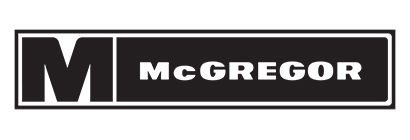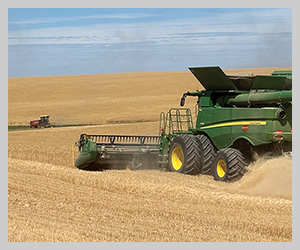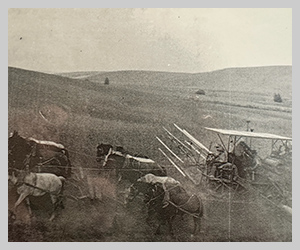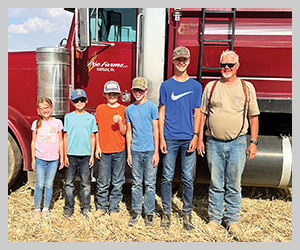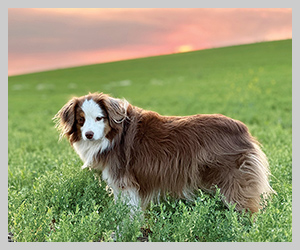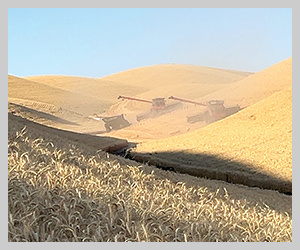Flying high on drone technology Terraplex Pacific Northwest
2025August 2025
By Trista Crossley
Editor
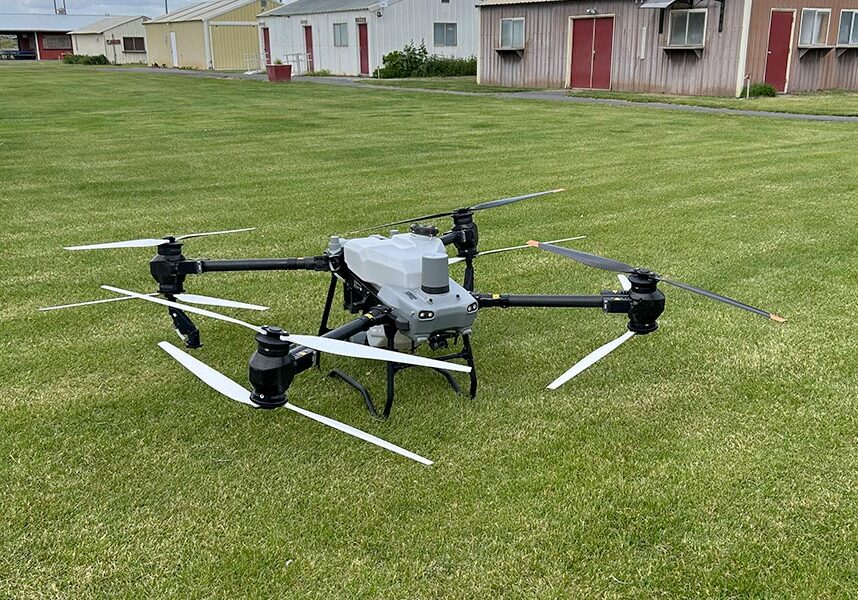
For Doug Bruce, drones seem like the perfect complement to his existing businesses; besides growing wheat, bluegrass, lentils, barley, oats, and a bit of alfalfa on his family’s farm near Farmington, Wash., he also sells ag chemicals through a local branch of the Hefty Seed Company.
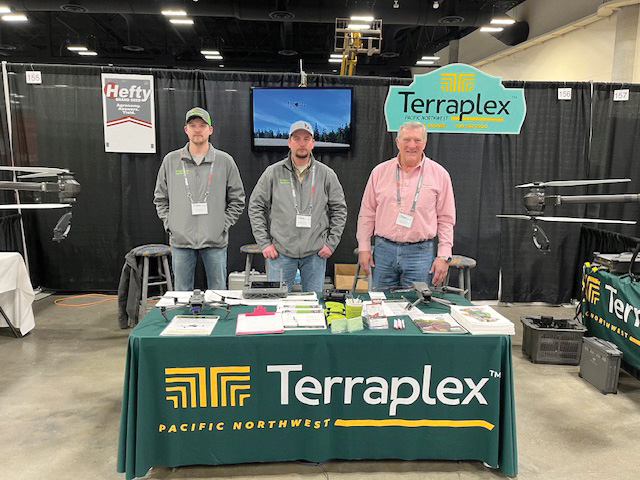
Drones flew onto Bruce’s radar last year when a Hefty Seed Company representative mentioned them to him. After seeing a demo, he purchased a drone and became a licensed dealer for Terraplex, which is based in Iowa. To help manage the workload, Bruce brought in Tyson Lowley and Russell Erickson as partners in the drone business — they also work with him on his family’s farm.
“The drones are part of your toolbox in the shop,” Bruce explained. “You have multiple tools, and each one does a specific job. We have a self-propelled, 120-foot sprayer, and it does certain things. We also have the two drones, and they do certain things. We don’t really look at the drones as taking the place of any other types of equipment that apply herbicides and insecticides and fungicides. It’s just another tool in your toolbox.”
While drones may not replace 120-foot sprayers, they do have some advantages over traditional farm equipment. Drones don’t leave tire tracks through a crop, and they are able to spray in places that are hard for land-based vehicles to get to. Erickson said they’ve recently done some spraying for noxious weeds in the canyons along the Snake River.
Bruce’s team also said coverage is typically better with a drone. The drones use atomizing nozzles that spin to create the droplet size, meaning droplet sizes can be changed on the go without having to change nozzles.
“The propellers on the drone create the (spray) pattern, and they push the pattern down into the crop,” Bruce said. “You have a different penetration than you would with a typical sprayer. In order to get the same type of coverage (with a typical sprayer), you would have to have tremendous amounts of pressure, which then increases drift.”
Besides spraying chemicals, the drones can also seed, do mapping, take multispectral imaging, and do thermal imaging, which is useful in search and rescue operations. Multispectral imaging can measure a number of different crop attributes, such as plant height, plant count, and weed density, giving growers an opportunity to spot a problem before it is visible to the naked eye.
All drones have to be registered and licensed through the Federal Aviation Administration, in addition to any state agency requirements. Each member of the Terraplex Pacific Northwest team had to get a Remote Pilot Certificate to fly the drones (also called a Part 107 drone license). They also spent a considerable amount of time spraying water on Bruce’s farm to practice and better understand what the drones can or can’t do.
Bruce said that in the past, drones had problems negotiating the hilly terrain of Eastern Washington.
“The first few drones that came out into this area didn’t have two radar systems,” he said. “They just had a single radar system. Consequently, they weren’t able to manipulate the hills and negotiate the draws like the newer ones do. These that we’re flying now have two different radar systems as well as an avoidance system to keep from colliding with anything like power lines, power poles, trees. The newer drones are much, much better.”
While drones are much more mobile than traditional farm equipment, that mobility comes at a cost. A short battery life means the team needs to be as close to the target area as possible, otherwise, the drone uses up too much battery flying back and forth to the loading zone. Regulatory issues mean drones can’t go beyond 400 feet of elevation from their takeoff point, limiting their upward range. Drones are also restricted in how much volume they can carry. Lowley pointed out that certain chemical labels call for 10 to 15 gallons of water to be added. The drones that Terraplex Pacific Northwest fly can hold approximately 110 pounds
“Depending on the chemicals, we’ll have to turn away business because we can’t get enough water per gallon with the chemical,” he explained.
Bruce doesn’t see drones ever completely replacing sprayers, but he’s certain there is a place for them, especially when you compare prices. He said a farmer can expect to spend approximately $50,000 to buy a drone and everything needed to use it — a self-propelled sprayer can set a farmer back $800,000 or $900,000.
“There’s definitely a comfort level when you first start, and the drone goes out of sight,” Bruce said. “You are somewhat apprehensive of what’s going to take place, but after doing it a while, you learn very quickly that it’s totally autonomous. It takes off itself, and it can land itself and, obviously, it sprays itself. The piloting skills are not in flying. The piloting skills are in learning the software and how to operate all the different functions on the controller and reading the environment, If you’re out spraying, you have to know if the wind changes or what you’re really looking at when it’s spraying. What we found is, by far, the best drone pilot is a good farmer.”
For more information, contact Terraplex Pacific Northwest at terraplexpnw@gmail.com or visit their website at terraplexpnw.com.


